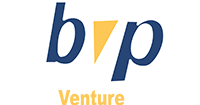Daryl Yurek says that equipment leasing is a great source of cash for a young company. It’s a financing option that allows businesses to use equipment without having to purchase it outright. Instead, the business leases the equipment from a leasing company and makes regular payments over a set period of time. The equipment vendor and leasing company both have a big incentive to do the transaction because they profit on both ends. They will value the asset you purchase at 90% whereas a bank will value it at %30.
The leasing company purchases the equipment from the supplier and leases it to the business for a fixed term, typically ranging from one to five years. The business pays monthly or quarterly payments over the lease term, usually lower than the monthly payments required for purchasing the equipment outright.
At the end of the lease term, the business has several options. They can choose to return the equipment to the leasing company, extend the lease, purchase the equipment at its fair market value, or upgrade to new equipment with a new lease.
Equipment leasing is a popular financing option for businesses of all sizes, as it allows them to acquire expensive equipment without having to use their own capital or take out a large loan. It can be particularly useful for businesses that need to keep their equipment up-to-date or need specialized equipment for a specific project.
Daryl Yurek says that o ne of the main benefits of equipment leasing is that it provides businesses with a predictable monthly expense, which makes it easier to budget and manage cash flow. It also allows businesses to conserve their capital and use it for other purposes, such as expanding operations or investing in marketing. Equipment leasing agreements can be structured as either a capital lease or an operating lease. A capital lease is similar to a loan, in that the lessee assumes some of the risks and benefits of ownership, and the equipment is recorded as an asset on their balance sheet. An operating lease is more like a rental, in that the equipment is not recorded as an asset and the lessee does not assume the risks and benefits of ownership.
To obtain an equipment lease, businesses typically submit an application to a leasing company, which includes information about their creditworthiness, financial history, and the equipment they want to lease. The leasing company will evaluate the application and determine the lease term, interest rate, and other terms and conditions based on the business’s creditworthiness and financial history. Overall, equipment leasing can be a flexible and cost-effective financing option for businesses that need to acquire new equipment without using their own capital.
It’s important to carefully evaluate the terms and conditions of an equipment lease and work with an experienced financial professional to determine if it’s the right choice for your business’s needs.
